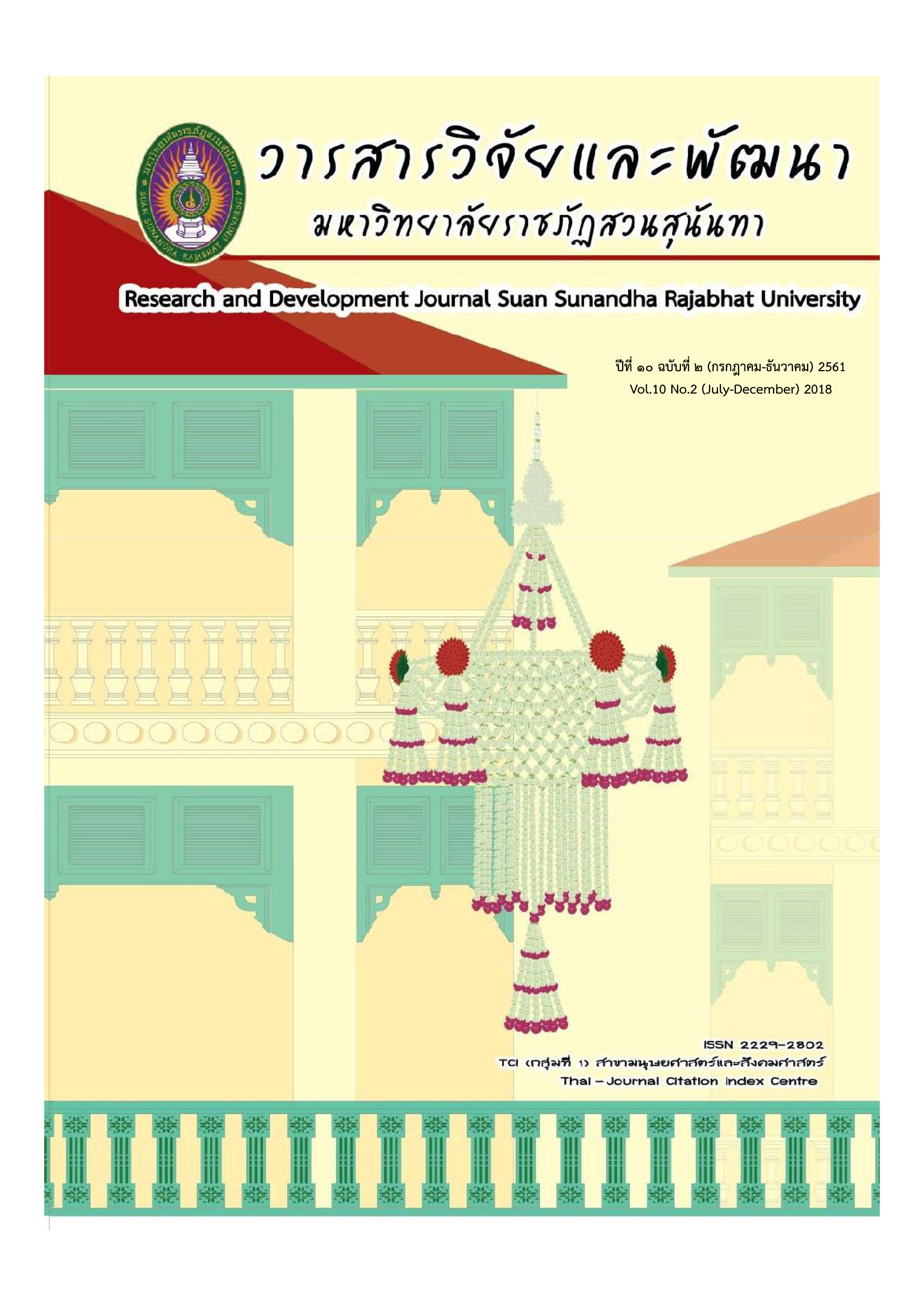Bond Market Liquidity in Thailand
DOI:
https://doi.org/10.53848/irdssru.v10i2.163795คำสำคัญ:
Bond market liquidity, Tightness, Depth.บทคัดย่อ
Bonds are an attractive investment choice. If the bond market has a high level of liquidity, it will attract both local and foreign investors. Therefore, identifying its liquidity level is vital to the decision-making process for investors. This study presents a method for measuring the liquidity in the Thai bond market by analyzing 64 monthly government bond series from 2006 to 2015. Liquidity is measured using two main components. The first is tightness, reflecting the trading cost, and the second is depth, reflecting the trading volume to outstanding bonds. The results show that bond market liquidity is high when taking trading cost into consideration. However, it can be low when taking account of the trading volume to outstanding bonds.
Bonds issued in large quantities have more liquidity. The short to medium term bonds have more liquidity than long-term, whereas benchmark bonds have more liquidity than non-benchmark. In order to increase liquidity in the Thai bond market, regulations should be put in place to stimulate trading volume in the secondary market, especially for non-benchmark, short and long-term bonds, and those issued in smaller quantities, by implementing attractive investment policies and increasing the series of outstanding bonds.
เอกสารอ้างอิง
Borio, C., (2000). Market liquidity and stress: selected issues and policy implications, Bank for International Settlements Quarterly Review.
Chabchitrchaidol, A. and Panyanukul, S., (2005). Key Determinants of Liquidity in the Thai Bond Market. Bank of Thailand.
Committee on the Global Financial System, (1999). Market Liquidity: Research Findings and Selected Policy Implications. Bank for International Settlements.
Darst, D.M., (1975). The Complete Bond Book. A Guide to All Kinds of Fixed-Income Securities. pp 35–53.
D’Souza, C. and Gaa, C., (2004). The Effect of Economic News on Bond Market Liquidity.Bank of Canada. Working Paper.
Endo, T., (2003). Developing Efficient Market Infrastructure and Secondary Market of Government Bonds in Developing Countries. The World Bank.
Gray, S.T, and Talbot, N., (2007). Developing financial markets. The Centre for Central Banking Studies, Bank of England.
Harris, L., (2003). Trading and Exchanges Microstructure for Practitioners. Oxford University Press.
Kapingura, F. and Ikhide, S., (2011). Econometric Determinants of Liquidity of the Bond Market: Case Study of South Africa. The African Economic.
Kyle, A.S., (1985). Continuous auctions and and insider trading. Econometrica, vol 53, no 6.
Muranaga, J. and Shimizu, T., (2000). Market microstructure and market liquidity. Bank of Japan.
O’Hara, M., (1995). Market Microstructure Theory. Oxford: Basil Blackwell Publishers.
Oxelheim, L. and Rafferty, M., (2005). On the Static Efficiency of Secondary Bond Markets. Journal of Multinational Financial Management. Vol. 15, No. 2
Sarr, A. and Lybek, T, 2002. Measuring Liquidity in Financial Markets. International Monetary Fund, IMF Working Paper Series.
Upper, C., 2001. How safe was the “Safe Haven”? Financial market liquidity during the 1998 turbulences. Deutsche Bundesbank.
ดาวน์โหลด
เผยแพร่แล้ว
รูปแบบการอ้างอิง
ฉบับ
ประเภทบทความ
สัญญาอนุญาต
บทความที่ได้รับการตีพิมพ์เป็นลิขสิทธิ์ของ สถาบันวิจัยและพัฒนา มหาวิทยาลัยราชภัฎสวนสุนันทา
ข้อความที่ปรากฏในบทความแต่ละเรื่องในวารสารวิชาการเล่มนี้เป็นความคิดเห็นส่วนตัวของผู้เขียนแต่ละท่านไม่เกี่ยวข้องกับมหาวิทยาลัยราชภัฎสวนสุนันทา และคณาจารย์ท่านอื่นๆในมหาวิทยาลัยฯ แต่อย่างใด ความรับผิดชอบองค์ประกอบทั้งหมดของบทความแต่ละเรื่องเป็นของผู้เขียนแต่ละท่าน หากมีความผิดพลาดใดๆ ผู้เขียนแต่ละท่านจะรับผิดชอบบทความของตนเองแต่ผู้เดียว





